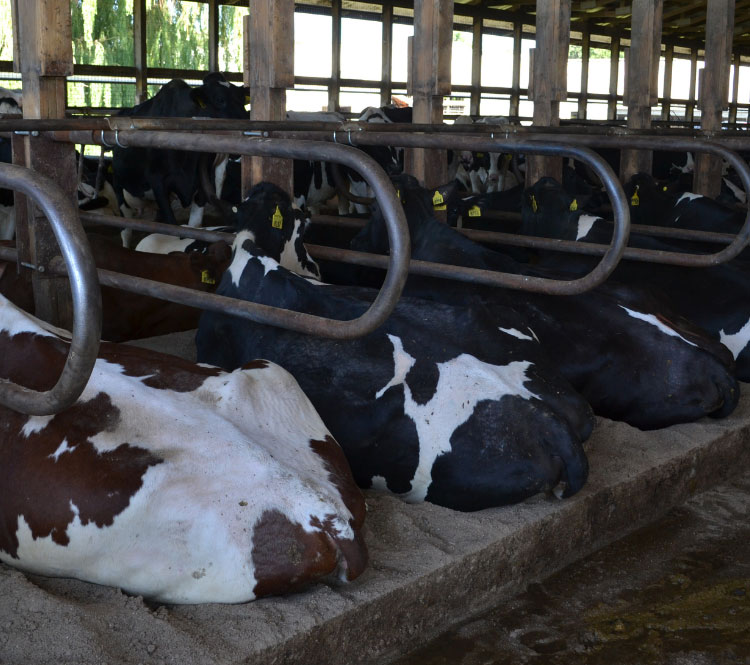
Sand is widely regarded as the best bedding for dairy cows. But not all sand is created equally.
Sand is available in a range of particle sizes for a variety of different uses. However, when it comes to dairy cow bedding, sand quality is imperative to ensure all the benefits of sand are realized.
Here’s why sand quality matters:
Cow comfort and health
Optimum quality sand is necessary for peak cow health and comfort. High-quality sand will contain a consistent mix of coarse and fine particles.
Sand containing an excess of too-coarse particles can potentially harm cow’s hooves.
Conversely, sand containing an excess of fine materials, such as silts and clays, can become hard in the stalls, making them uncomfortable. Fine particles also tend to retain moisture, which can create an ideal breeding ground for mastitis-causing bacteria.
High-quality sand helps maximize cow health and comfort by allowing moisture to wick away from cows, keeping them cleaner and drier. It’s more comfortable to lie on and provides traction for the cow to stand. It’s also abrasive enough to clean between cow’s toes, lowering lameness incidence.
Separation and recycling
Additionally, high-quality sand can be recycled and reused. This process can save dairies thousands of dollars annually by limiting the amount of new sand required and reducing sand inventory needs.
Sand can be recycled using sand lanes, mechanical sand separation equipment or a combination of the two. Sand recycling can be utilized on dairies of all sizes and with a variety of manure handling/removal systems.
As with cow health and comfort, sand quality is also important for optimal separation. Sand containing minimal fine material is ideal for separation and high sand recovery.
The best bedding sand
Concrete sand is the best type of sand for dairy cow bedding for three reasons:
- It contains a consistent mix of coarse and fine particles ideal for cow health and comfort. It doesn’t contain an excess of coarse particles that can harm the cow, and it contains minimal fine material that can cause the beds to become dirty and uncomfortable. Concrete sand offers a comfortable lying surface.
- It offers high sand recovery in sand separation systems, equating to less money spent on buying new sand. It also means less material in the manure stream that can fill up lagoons or storage ponds and less material that needs to be spread in fields. Also, because concrete sand is a standard product containing a consistent range of particle sizes, separation performance and efficiency can be better predicted. This is especially important if the dairy uses anaerobic digestion, where it’s crucial to remove as much sand as possible ahead of the digestor to limit material buildup within the unit. Using a combination of mechanical sand separation equipment, such as Sand-Manure Separators and Agricultural Hydrocyclones, used in conjunction with sand settling lanes, dairy producers can recover up to 98% of sand from the manure stream.
- Concrete sand is available around the world. Depending on the location, concrete sand may also be called construction sand, bedding sand, river sand or torpedo sand.
By using quality sand such as concrete sand for dairy cow bedding, dairy producers can maximize cow health and cow comfort as well as benefit from recycling sand for reuse.
Visit mcLanahan.com for more information.
Headquartered in Hollidaysburg, Pa., USA, McLanahan Corporation offers over 185 years of experience in providing processing solutions to a variety of materials handling industries. Today, their operation includes offices in the United Kingdom, Australia, China and Chile, and it is supported by a strong network of dealers and partners around the world. For more information, contact sales@mclanahan.com.
